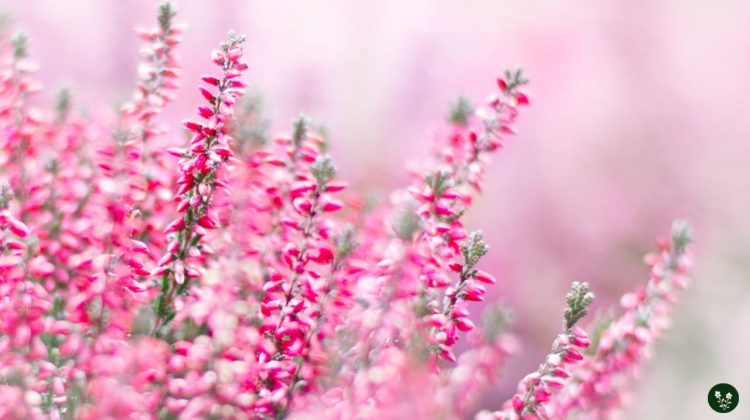
The heather flower holds deep symbolism and meaning in various cultures, often representing good luck, protection, and prosperity.
Growing in demanding conditions where other flowers may struggle, heather flowers showcase independence and confidence, further adding to their allure.
Heather flowers are admired for their beauty and carry significant meanings dating back to Celtic and pre-Celtic times.
In Victorian times, purple heather was associated with admiration and beauty, while white heather symbolized luck, protection, and the fulfillment of dreams.
Their enduring significance continues making them popular for various occasions and thoughtful gifts.
As these delicate blossoms continue to captivate the hearts of many, heather flowers remain a cherished symbol in various traditions and cultures.
Their meanings may range from representing independence to fulfilling dreams, but one thing is sure: heather flowers hold a powerful and inspiring presence in the world of flora.
In this article, we'll cover
1. Heather Flower Symbolism
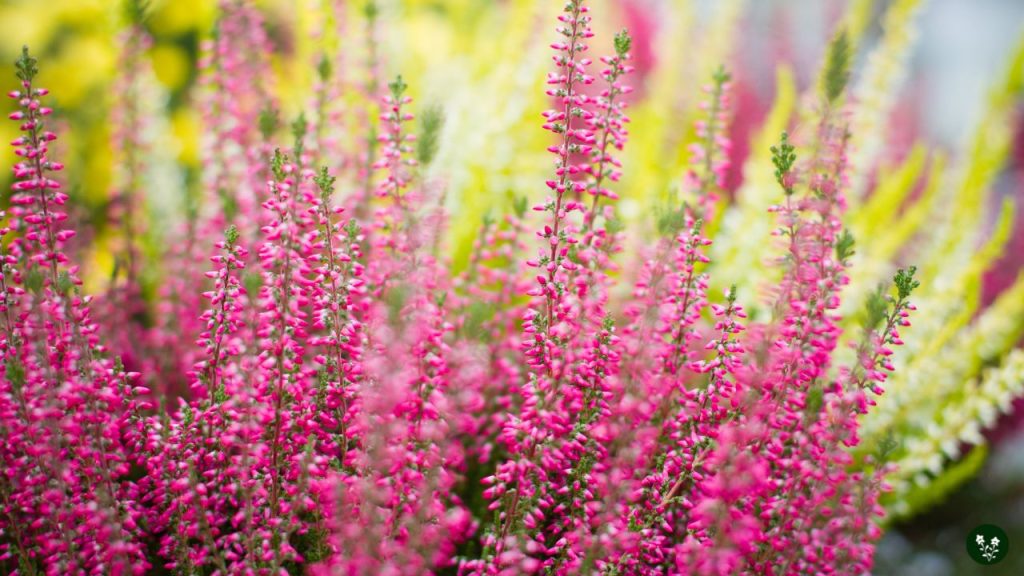
The heather flower holds various symbolic meanings, making it popular for different occasions. Its meanings can be traced back to the Celts and pre-Celts.
Predominantly, the heather flower signifies good luck, protection, and prosperity. However, this versatile bloom also carries connotations of love and respect.
Many regard heather flowers as good luck symbols, often chosen as gifts for graduations and housewarmings.
The flower’s ability to grow in challenging environments can be seen as a testament to its adaptability and resilience.
This quality has led people to associate heather with confidence and independence, adding to its value as a good luck charm.
Interestingly, different colors of heather flowers represent distinct meanings. For example, purple heather symbolizes beauty, admiration, and solitude, whereas pink heather is mainly linked with good fortune.
Likewise, white heather is believed to bring luck, protection, or fulfillment of a dream.
In addition to its various meanings, the heather flower symbolizes healing, particularly solitude and healing from within.
The diverse symbolism of heather flowers makes them suitable for multiple occasions, as they can represent different meanings depending on the context and color.
2. Heather Flower Cultural Significance
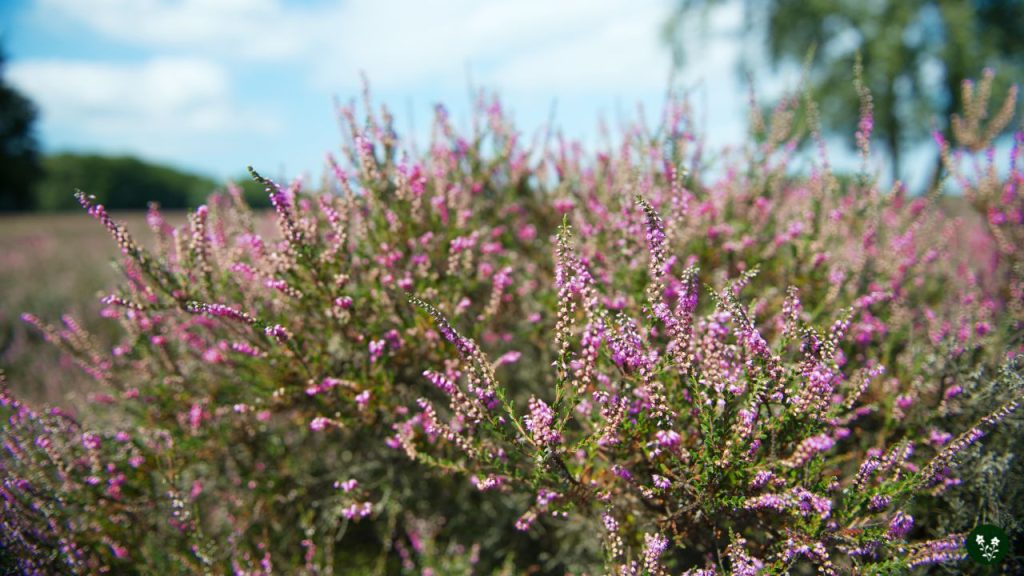
Scottish Traditions
Heather flowers are essential in Scottish culture, particularly the purple and white varieties. Purple heather signifies admiration, respect, and love, while white heather symbolizes good luck and innocence.
These flowers are often used in traditional Scottish ceremonies, such as weddings, to tell good fortune and blessings for the couple’s future life together.
They are also appreciated for their resilience and ability to thrive in harsh conditions, reflecting the solid and enduring spirit of the Scottish people.
Ancient Celtic Beliefs
In Celtic and pre-Celtic times, the heather flower was associated with independence, good fortune, and good luck.
This association can be traced back to the ancient Celts’ beliefs that heather had powerful properties capable of bringing good luck and warding off opposing forces.
Heather was also thought to have cleansing properties and was used to purify the body and mind during ritualistic ceremonies.
Victorian Language of Flowers
During the Victorian era, flowers were used as a non-verbal communication to express sentiments and emotions, known as the “language of flowers.”
In this context, heather flowers took on specific symbolic meanings based on color. Purple heather symbolized beauty and admiration, while white heather represented luck, protection, or the fulfillment of a dream.
Meanwhile, other colors, such as pink, symbolized good luck, and red heather was considered bad luck because of its association with blood.
3. Heather Flower Colors and Meanings
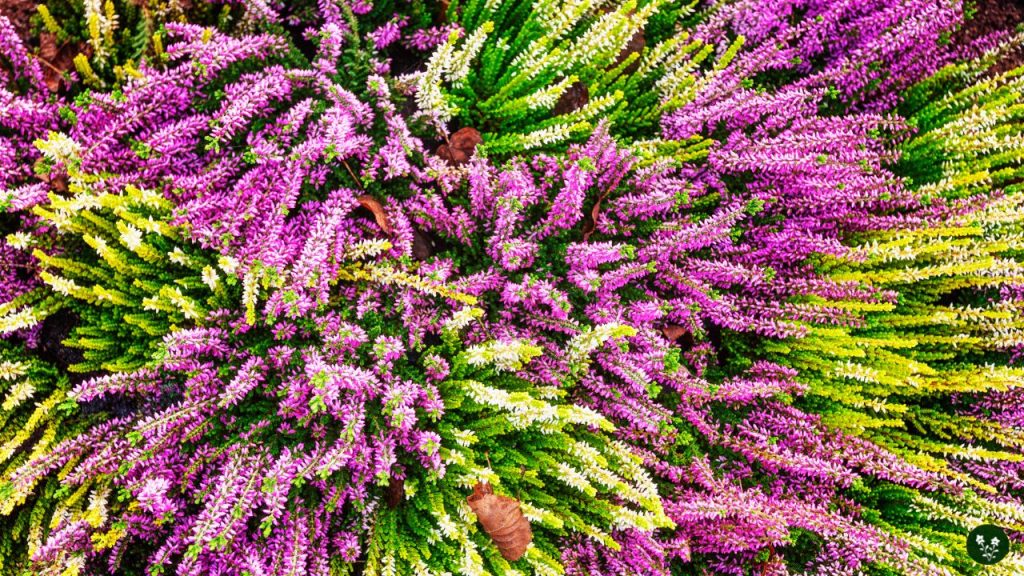
Let’s explore the meanings behind different colors of heather flowers, including purple, white, red, and pink. Each color has unique symbolism and is suitable for various gifting occasions or purposes.
Purple Heather
Purple heather flowers are often associated with admiration and beauty. They are an excellent choice to express your appreciation or respect for someone’s qualities or achievements.
This vibrant color adds a touch of elegance and grace, making purple heather a popular choice for various floral arrangements and bouquets.
White Heather
White heather is known for its symbolism of good luck, protection, purity, innocence, and faith.
Due to these positive associations, white heather flowers are popular for bridal bouquets and other special occasions where luck and well-wishes are desired.
In Scotland, a bride’s bouquet traditionally includes a sprig of white heather for good luck and prosperity.
Red Heather
While the information on red heather is limited, various shades of heather flowers can embody different meanings depending on cultural contexts and personal interpretations.
Red often symbolizes deep emotions, love, and passion, so it can be assumed that red heather flowers could be linked to similar sentiments.
As red is a powerful and striking color, red heather may be suitable for occasions that call for strong emotions and bold expressions.
Pink Heather
Pink heather flowers typically represent tenderness, affection, and warmth. They are a popular choice for romantic occasions or to show someone you care for them.
The delicate pink hue adds a touch of softness and charm to any floral arrangement, making it a versatile choice for various events and sentiments.
As you can see, the color of a heather flower plays a significant role in its symbolism and meaning. Choose the appropriate color to convey the intended message when gifting heather flowers to friends and loved ones.
4. Heather in Mythology and Folklore
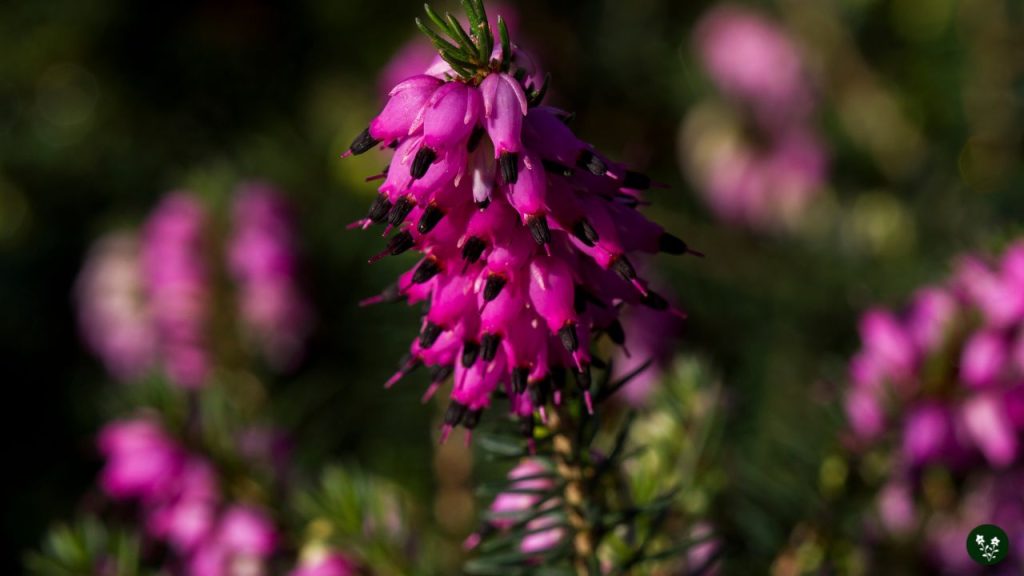
Heather has a rich history and accumulated various meanings and symbols over time. In Celtic and pre-Celtic times, heather symbolized independence, good fortune, and good luck.
The Victorian meanings of heather flowers suggest that purple heather represents beauty or admiration, while white heather symbolizes luck, protection, or fulfillment of a dream.
In Scotland, heather and the famous thistle are considered botanical symbols of the country. It holds particular significance in the Highlands, where it grows abundantly.
The Gaelic word for heather is “fraoch,” which appears in many Scottish place names.
There is also a well-known Scottish myth involving heather flowers. According to the tale, a woman named Malvina was engaged to Oscar, a warrior who died in battle.
She learned of his death from a messenger, who presented her with heather flowers to symbolize Oscar’s love.
Heather is not only significant in myths and legends but is also believed to have healing properties.
Traditionally, it is associated with treating various ailments, such as digestive issues and arthritis. Heather is also a popular remedy in the form of herbal teas or extracts.
5. Using Heather Flowers
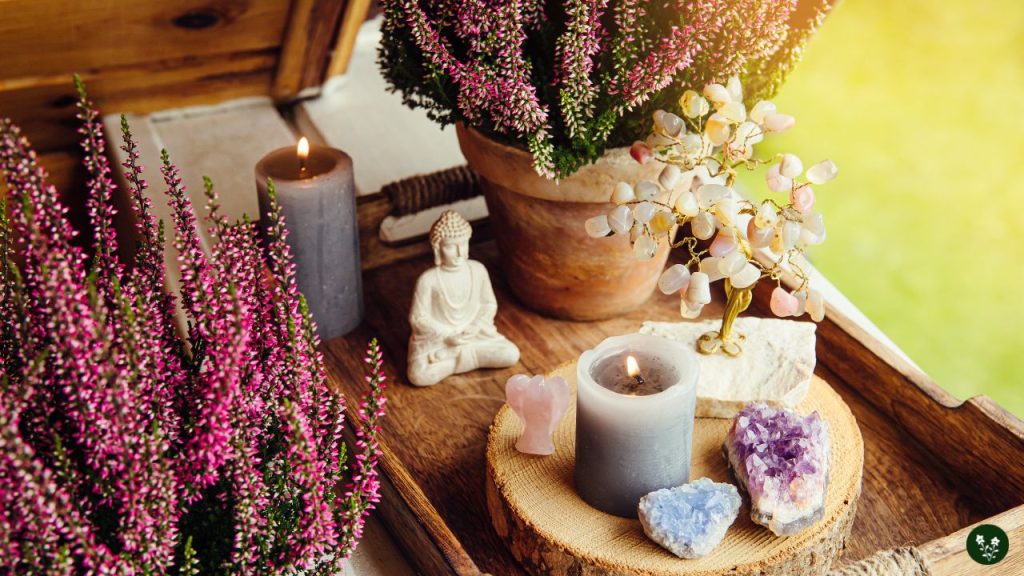
In Gardens and Landscaping
Heather flowers, known for their symbolism of good luck, protection, and prosperity, can add elegance and interest to gardens and landscapes.
These hardy plants are appreciated for their ability to grow in challenging environments, making them ideal for creating a sense of independence and confidence in outdoor spaces.
Besides their meaningful connotations, heather flowers provide year-round visual appeal with their evergreen foliage and vibrant color varieties.
Consider incorporating different species and colors to create a beautiful and diverse arrangement when planting heather.
To ensure success, provide well-drained soil, proper sunlight, and appropriate watering schedules.
For Floral Arrangements
Heather flowers are a striking addition to floral arrangements, specifically when intending to convey love, respect, or admiration for someone.
Their distinctive appearance and meaningful symbolism easily enhance any bouquet or centerpiece’s overall aesthetic and message.
When using heather flowers in arrangements, consider the following tips:
- An appropriate color varies based on the desired symbolism, such as white for luck and protection or purple for beauty and admiration.
- Pair heather flowers with complementary blooms and foliage to create visually harmonious compositions.
- Be mindful of the heather flower’s size and structure, incorporating them as primary focal points or accents, depending on the design’s needs.
Whether used in gardens, landscapes, or floral arrangements, heather flowers contribute beauty and charm and convey meaningful messages that resonate with many.
Discover the captivating world of flower meaning:
Leave a Reply